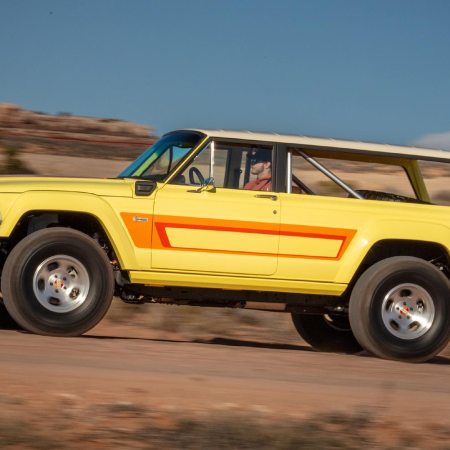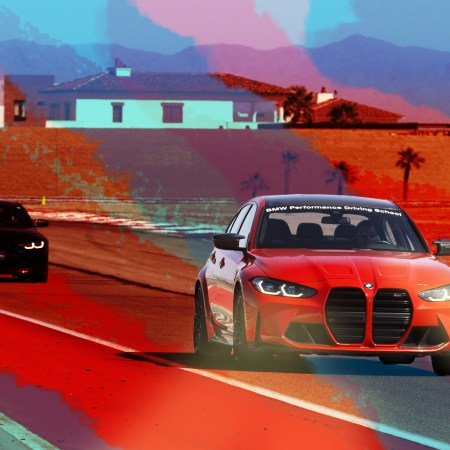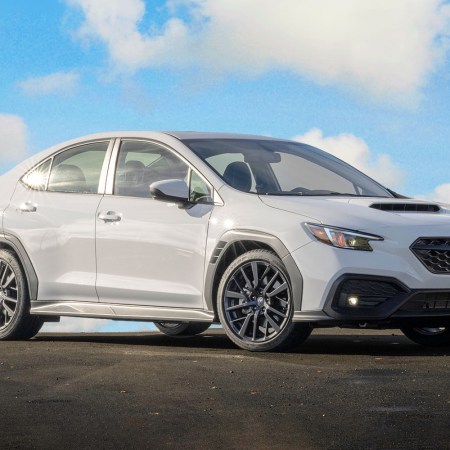Of all major car manufacturers in the last 60 years, there is arguably no brand more deeply associated with a single model than Porsche and its 911. While this has allowed for the 911 to become what is arguably the most iconic and definitively the most profitable sports car in the world, it also created a double-edged sword in that any new model Porsche produces — no matter its prowess — carries the stigma of being “not a 911”.
Though steady sales of the Cayenne and Macan SUVs, the four-seater executive rocketship Panamera, the purist-pleasing Boxster and Cayman, and the Tesla-challenging Taycan may make it seem like Porsche has no problem building a following across their entire range, for decades, this was not the case. Just 32 years ago, Stuttgart executives were attempting to boost a brand on the verge of bankruptcy when they introduced the 993 (an air-cooled variant of the 911), a car that would reign for just five model years but would go on to attract a cult following among collectors that persists to this day. The popularity of that car has also quietly opened up opportunities for the savvy collector: there exist a number of exceptional Porsches produced in the air-cooled 911 era that have been exempt from the air-cooled 911 price bubble for the sole reason that they are, indeed, “not a 911.”
The undying ubiquity of the 911 is in many ways a surprise to even Porsche itself. From a pure physics perspective, a car that has the vast majority of its weight — engine and transmission — hanging out over the back wheels is what most engineers would describe as a “terrible idea.” This was not a fact lost on company executives, and in the mid-1970s, with sales of the 911 slumping and the auto industry as a whole still reeling from the recent oil crisis, Porsche introduced a car that was radically different from the souped-up punch buggy that had become its flagship. Gone were the rear-mounted engine and transmission, and instead, borrowing from an idea featured in such legendary cars as the Ferrari 275, Porsche placed the engine up front and the transmission in the rear, allowing for better balanced weight distribution and significantly improved handling. This was the beginning of what was known as the “transaxle era” which produced a series of thoroughly enjoyable sports cars which can be purchased today for significantly less than 911s of the same vintage: the 924, 944 and 968.
The Pacesetter
The derisive and unwarranted title of the “poor man’s Porsche” has recently been bestowed upon the first-generation 986 Boxster (a phenomenally fun car in its own right that finally seems to be getting some of the love it deserves), but it originally belonged to Porsche’s transaxle-era sports cars, aka the 924/944/968 range. The knock on these cars was that the engine Porsche had decided to put up front for the first time was only four cylinders, which, particularly in the “no replacement for displacement” mindset of American consumers, was seen as far too paltry of a powerplant for a sports car. But while Porsche had a history of four-cylinder cars dating back to the original 356, the reason for their first transaxle sporting a four-banger was that it was never meant to be a Porsche at all.
Porsche and VW/Audi had many years earlier struck a deal to form a joint marketing and distribution company, or vertriebsgesellschaft. This would allow Porsche access to the much larger and more established business footprint of its corporate cousin, and in exchange, Porsche had agreed to design a new, brand-leading sportscar utilizing an existing VW/Audi engine to be sold under the latter’s nameplate. However, a change in VW/Audi management caused the idea to be scrapped, and Porsche bought back its own design and in 1976 released the car — still manufactured in Audi’s factories rather than its own — as the Porsche 924.

Demand for a lightweight, well-balanced, entry-level Porsche was evidenced by the more than 150,000 units the 924 went on to sell, but while journalists praised its handling, there was one drawback: at less than 100 horsepower upon introduction and a 0-60 time of almost 12 seconds, the 924 was just plain slow. The addition of the 924 Turbo in 1979, and later, the 924S, brought real sports car-worthy performance to the platform, and today represents the sweet spot for the educated enthusiast. Base model 924s can regularly be found for four-figure prices in decent driver condition, and clean Turbo and S models can still be had for less than $15k.
On the other end of the spectrum are the limited edition 924 Carrera GT, 924 Carrera GTS and 924 Carrera GTR models, which, while legal for the road, were specifically meant for the race track. RM Sotheby’s sold a 924 Carrera GTS earlier this year for more than a quarter million dollars, and Porsche North Houston currently has one of the 17 924 Carrera GTRs ever produced on their lot for a mind-boggling $925,000 a price that would have seemed unfathomable for a 924 just a few years ago.
Another Horse Joins the Stable
In 1982, Porsche introduced the 944, a more powerful, more refined version of the 924. While Porsche offered both cars for several years, buyers overwhelmingly flocked to the 944, making it Porsche’s bestelling model until the Boxster claimed that crown two decades later. Unlike the VW/Audi-based engine that powered the 924, the 944 featured a 2.5-liter, 45-degree-mounted four-cylinder engine fully developed by Porsche and a near perfect weight balance of 50.7% front and 49.3% rear. The fun factor was turned up even more with the 944 Turbo in 1987, which achieved a to-this-day respectable 0-60 sprint of less than six seconds and holds the cocktail-party trivia accolade of being the first car offered in America with both driver and passenger airbags as standard equipment.

A convertible version was added to the lineup in 1989, by which point the higher-performance naturally aspirated S and S2 models were giving the turbos a run for their significantly higher money. While the days of the $2,500 944 may be long gone, they still represent an excellent value for people who want a part of the Porsche mystique. The low $20k range is now standard for good quality turbos, with an S or S2 available for half of that if you do your research. Though, one could certainly be forgiven for ponying up a few thousand extra sheckels for the top of the line Turbo S model with its “so out of style it’s awesome again” burgundy plaid interior.
The Last Transaxle
By 1991, Porsche gave a serious upgrade to what had been planned as the “944 S3,” but upon realizing that 80% of the car’s components were brand new, it was introduced as a standalone model: the 968. The 968 represents the pinnacle of the transaxle sports car platform. It was more powerful, more comfortable, more reliable and more handsome than the two models that preceded it, and though it lasted only a few years before being discontinued in 1994, the 968 maintains a place of pride in the Porsche lineup that the 924 and 944 were long denied.
Production of the 968 was finally moved away from Audi and into Porsche’s own factory, for one, and a potent 3.0-liter engine with a six-speed manual or five speed tiptronic came standard. A convertible option allowed for top-down fun, and while a turbocharged 986 was limited to just 14 cars wearing the “Turbo S” badging, the 968 did come in a guise that delights Porschephiles to this day: the 968 Club Sport.

The 968 Club Sport debuted what is now Porsche’s hallmark “give them less and charge them more for it” philosophy — a stripped-down car that did away with comforts like sound deadening, cushy seats and power windows in exchange for more dialed-in performance on a racetrack. It excelled in the “drive it to the track, win the podium and drive it back home” ethos now embraced by the sublime Cayman GT4, and of all of Porsche’s transaxle-era sports cars, it remains the one you want to own if laying down hot laps and winning respect at your local cars-and-coffee is your goal.
Of course, you’ll pay a premium for the privilege: Club Sports are hard pressed to be found for less than fifty grand these days, but well under $20k can still get you behind the wheel of a 968 coupe or convertible (yes, you want one with a manual), but all considered it’s a small price of entry for the enjoyment of a long-overlooked segment of Porsche-branded Sunday drivers. And given the trends of pricing for Porsches as a whole, you can rest assured they won’t be this affordable for long.
This article was featured in the InsideHook newsletter. Sign up now.






















